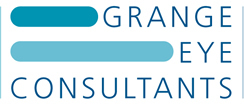How do eye surgeons perform cataract surgery?
Cataract surgery from the patient perspective is straightforward and should also be painless. From the surgeon’s perspective it’s a very high-tech procedure, but from your point of view, it is very, very straightforward.
The procedure involves you coming in for a couple of hours to the hospital and takes about 10 – 15 minutes. It’s usually done with anaesthetic drops, we are not doing injections into or around the eye, and you can also have sedation from an anaesthetist, which will give you, even more relaxation.
It is very rare for us to undergo general anaesthetics now because of the efficacy of topical eye drops and sedation for the procedure.
When you’re in the operating room, you have to lie flat and your eye will be covered with the drapes to keep the surgical field clear. And the patient often experiences what they describe as a kaleidoscope effect. They see all sorts of bright lights swirling around, which many find very interesting and exciting, which is an added bonus.
At the end of the procedure, you will have a plastic shield over the eye, to stop you rubbing the eye and you will have a series of eye drops, two types, four times a day, for a month.
The process should be extremely straightforward from the patient’s perspective and there should be no pain. Maybe a little bit of grittiness for 24-48 hours, but otherwise it should be a painless procedure. At the end of the procedure, you’ll be given two types of eye drops to use four times a day, for up to a month and there won’t be any pain from the procedure, although a little bit of grittiness.
More about Paul Rosen
Paul Rosen is a Consultant Ophthalmic Surgeon at The Grange Eye Consultants. His special expertise is in laser eye surgery, cataract surgery, and the treatment of Age-related Macular Degeneration, glaucoma, and retinal diseases. He has over 20 years experience in treating people with eye problems. Paul is invited to lecture on cataract and refractive surgery both nationally and internationally. He leads clinical trials investigating novel eye treatments. Paul has served as the President of the UK and Ireland Society of Refractive Surgeons and is currently the President of the European Society of Corneal and Refractive Surgery. More recently I’d been appointed as a member of the NICE Cataract Guidelines Committee and also on the Refractive Surgery Subcommittee of the Royal College of Ophthalmologists.
